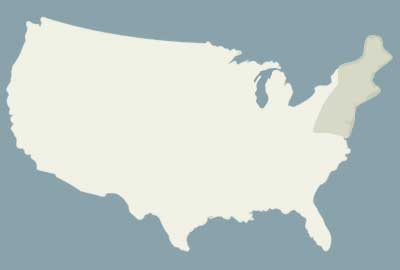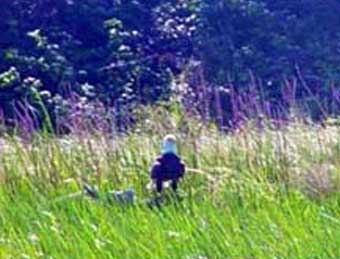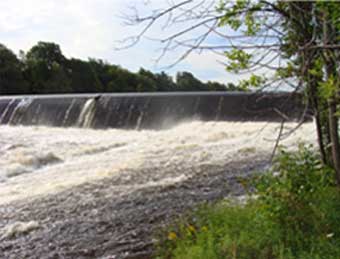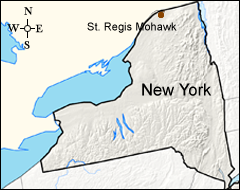Tribal Profiles

Saint Regis Mohawk Tribe: Climate Change and Adaptation Planning for Haudenosaunee Tribes
Click HERE for PDF version.
Tribes are beginning to identify potential climate change impacts on their cultural and environmental resources and to develop climate change adaptation plans. The Saint Regis Mohawk Tribe, located in New York and Canada, is in the early stages of adaptation planning. The Tribe is bringing together the Haudenosaunee decisions makers from the Tuscarora Nation, Seneca Nation, Tonawanda Nation, Onondaga Nation, Cayuga Nation, and Oneida Nation in New York as well as the Mohawk Nation and Shinnecock Nation to identify priority resources that should be considered in addressing climate change. The goal of the Haudenosaunee and other Tribes is to combine knowledge of traditional cultural resource values with local knowledge of recent climate changes. The ultimate goal of this unique strategy is to bring together Tribal decision makers to share information that will lead to practical planning.


Adaptation Planning Project
Saint Regis Mohawk Tribe was awarded funding from the U.S. Environmental Protection Agency, Region 2, to work on their project “Climate Change and Adaptation Planning for Haudenosaunee Tribes”. The work to identify the changes in climate and its impacts will be conducted from January 2011 through December 2012. Some of the cultural and natural resources that will be considered in this project are fish and wildlife, air, water and land.
The climate change adaptation planning framework that Saint Regis Mohawk Tribe is developing includes working with leaders from the other Tribes and working with the tribal community to aid their understanding of the direct impacts of climate change on the Mohawk way of life. Saint Regis Mohawk is concerned about cultural impacts of climate change and is working with climate change experts from the National Oceanic and Atmospheric Administration ( NOAA) and private contractors to help identify historical land uses and changes that have come with urbanization. They are also conducting a climate data inventory to aid in the identification of sensitive cultural resources.
A challenge to the Saint Regis Mohawk early in the project was identifying and obtaining contracts for the required work; this was overcome after several months of research and negotiation. As the Saint Regis Mohawk Tribe progresses with the project, there may be other challenges identified. A lesson learned is the importance of identifying people with climate change expertise, before work on the project begins. The outcomes from a meeting with Tribal leaders included the identification of the concerns of each nation and identification of the contacts.
The tribe is designing and developing a website, which will be continuously updated, to house written reports on best practices and lessons learned and community tools such as posters and handouts. This website for Haudenosaunee, Seneca, Shinnecock and Oneida Nations will help them learn more about climate change impacts and provide access to the adaptation plans that the Tribes have put into place.
The culmination of this project will be a series of conferences and/or workshops in New York State focusing on climate change and the findings from the project. The climate change impacts on Tribal natural resources, cultural resources, and environmental justice impacts to community members will be addressed.
We who have gathered together are responsible that our cycle continues. We have been given the duty to live in harmony with one another and other living things. We give greetings that our people still share the knowledge of our culture and ceremonies and are able to pass it on. We have our elders here and also the new faces yet to be born, which is the cycle of our families – for this we give thanks and greetings. Now our minds are one.
 About Saint Regis Mohawk Tribe
About Saint Regis Mohawk Tribe
Saint Regis Mohawk Tribe is one of the original Five Nations of the Iroquois. The Akwesasne (Saint Regis) Reservation was established between 1747 and 1755. The reservation is located on 14,640 acres of land in Franklin County, New York on the southern shore of the Saint Lawrence River, 80 miles southwest of Montreal and 30 miles north of the Adirondack town of Malone, New York. The Reservation is international since the Canadian-U.S. border bisects the original land area. The Canadian portion covers approximately 9115 acres, consisting of mainland in Quebec adjacent to New York State and several nearby islands in the Saint Lawrence River in the provinces of Ontario and Quebec.
Resources
Saint Regis Mohawk Tribe Environment Division: www.srmtenv.org/
Project Contact:
Angela Benedict
Air Quality Program Manager
Saint Regis Mohawk Tribe
Angela.benedict@srmt-nsn.gov
(518) 358-5937 x129
Photos in this profile are courtesy of the Saint Regis Mohawk Tribe’s Air Quality Program.
This profile was developed in 2011 by Jennifer Youngblood, National Tribal Environmental Council, for the Institute for Tribal Environmental Professionals, Northern Arizona University. The profile is available on the Tribal Wellbeing for Seven Generations Program website: https://itep.nau.edu/twsgp/tribes/. The tribal profiles featured on the website are intended to be a pathway to increasing knowledge among tribal and non-tribal organizations interested in learning about climate change mitigation and adaptation efforts.
CONNECT WITH US
Nikki Cooley
Co-Director
Nikki.Cooley@nau.edu
Karen Cozzetto
Manager
Karen.Cozzetto@nau.edu
Your tax deductible donation supports ITEP’s programming efforts.
Please contact us if you would like to contribute to our endowment or for any additional information regarding donations.

